Growing Raspberries: Best Planted As Bare-Root Canes Over The Dormant Period

FRUIT > RASPBERRY

Elizabeth is a Permaculture Garden Designer, Sustainability Consultant and Professional Writer, working as an advocate for positive change. She graduated from the University of St. Andrews with an MA in English and Philosophy and obtained a Diploma in Applied Permaculture Design from the Permaculture Association.
Reviewed By PETER LICKORISH

Peter is a Horticulture Lecturer and self-employed Horticulturist, with a passion for diverse areas of the industry - from garden design to the science behind plant growth and propagation. He has completed the Royal Horticultural Society’s Master of Horticulture (MHort) Award and lectures on RHS courses at Bedford College.
IN THIS GUIDE
RASPBERRY GUIDES
Raspberries are one of the most delicious fruits and they can be grown relatively easily in many UK gardens.
Learn more about these plants and everything you need to know to grow them successfully where you live in this simple guide.
Raspberries are a delicious crop which can provide you with abundant yields while taking up a relatively small amount of space.
Most are cane fruits, which are grown vertically, usually on supports, for summer or autumn harvest.
Though, interestingly, there are also some related ground-cover raspberries to consider.
Planting perennial fruiting plants like raspberries can be a wonderful choice for home growers as they provide an excellent return for the effort you expend, and take a lot less work than an annual food-producing garden.
Overview
| Botanical Name | Rubus idaeus |
| Common Name(s) | Raspberry |
| Plant Type | Perennial Fruit |
| Native Area | Europe and North Asia |
| Hardiness Rating | H6 |
| Foliage | Deciduous |
| Flowers | 5-petalled flowers |
| When To Plant | October – April |
| Harvesting Months | Varies depending on type grown |
| When To Prune | August to October or February |
Sunlight
Preferred
Full Sun
Exposure
Sheltered
Size
Height
1.5 – 2.5M
Spread
0.5 – 1M
Bloom Time
Summer
Soil
Preferred
Loam or sand
Moisture
Moist but well-drained
pH
Acidic or neutral
Raspberries most commonly grown are of the species Rubus idaeus.
Rubus idaeus var. idaeus is known as the European red raspberry and these raspberries are the focus of this guide.
However, it is worth noting that there are also other species and varieties within the Rubus genus, such as the American red raspberry, R. idaeus var. strigosus, and Asian raspberry types.1Rubus idaeus var. idaeus. (n.d.). North Carolina Extension Gardener Plant Toolbox. Retrieved March 23, 2023, from https://plants.ces.ncsu.edu/plants/rubus-idaeus-var-idaeus/

Many modern cultivars are actually hybrids between these two naturally occurring varieties.
Of relevance to some UK growers are some ground-cover Rubus species, such as R. tricolor, which can be used as ground cover, even in more shady spots.
In this guide, we will focus on the most common domestic cultivars of raspberry.
Common Growing Varieties
Raspberry cultivars are commonly divided into early-summer fruiting, mid-summer fruiting, late-summer fruiting and autumn-fruiting varieties.
For their care requirements, they are grouped more broadly into summer and autumn fruiting cultivars.
Common early-summer fruiting cultivars include:
- ‘Glen Clova’
- ‘Glen Moy’ (AGM)
- ‘Malling Jewel’ (AGM)
- ‘Willamette’
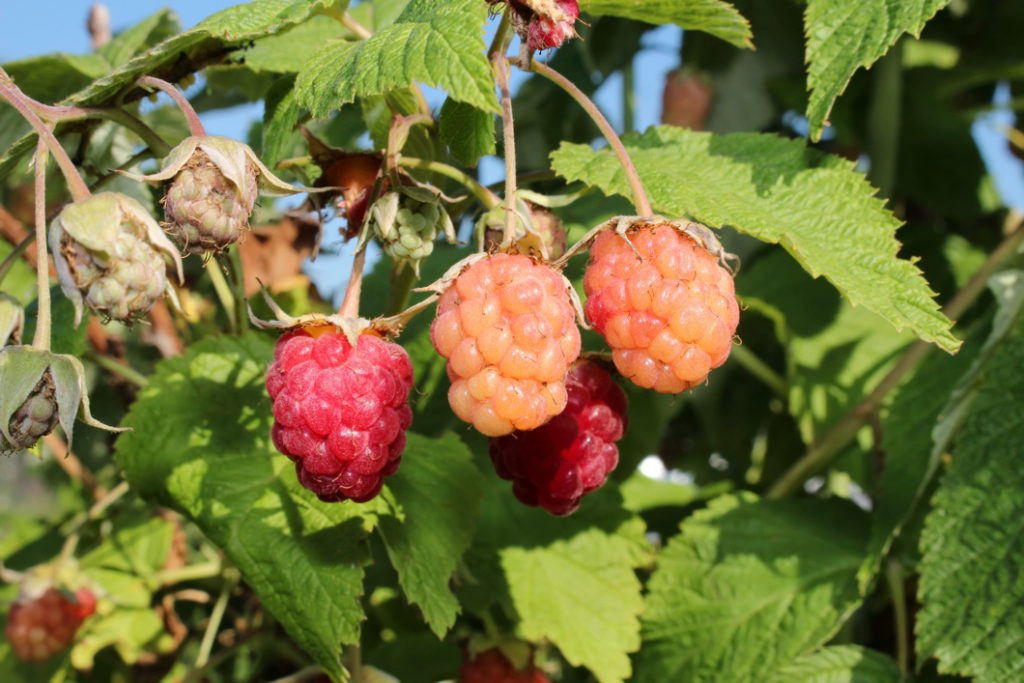
Common mid-summer fruiting cultivars include:
- ‘Glen Ample’ (AGM)
- ‘Newburgh’
- ‘Ripley’
- ‘Valentina’
- ‘Zeva’
Common late-summer fruiting cultivars include:
- ‘Cascade Delight’
- ‘Glen Magna’ (AGM)
- ‘Malling Admiral’ (AGM)
- ‘Tulameen’ (AGM)
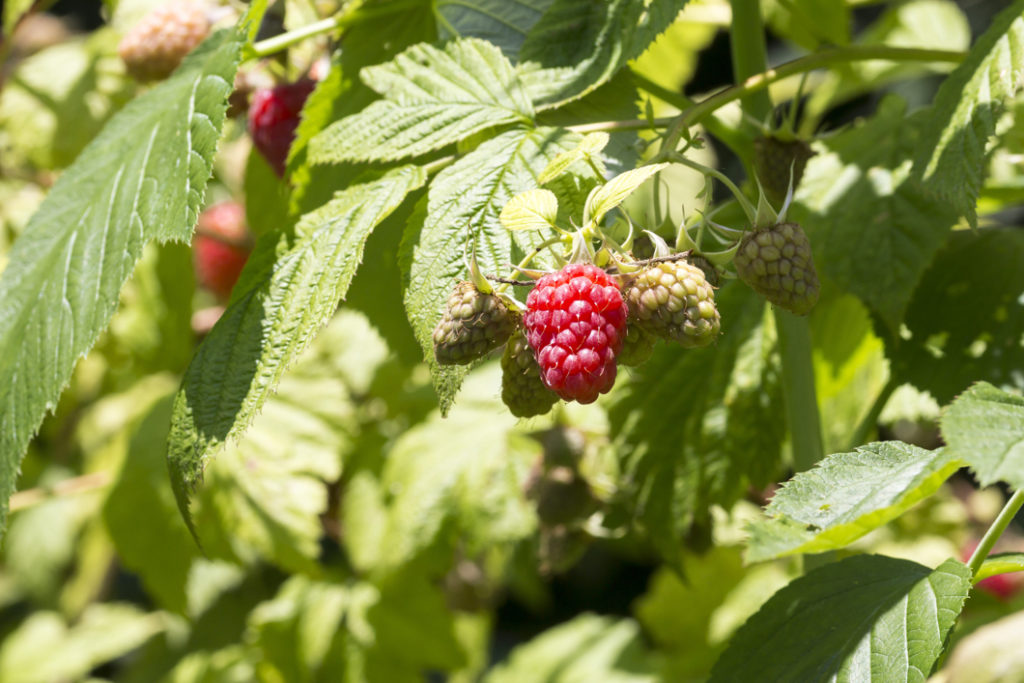
Common autumn fruiting cultivars include:
- ‘All Gold’ (AGM, yellow fruits)
- ‘Autumn Bliss’
- ‘Fallgold’ (yellow fruits)
- ‘Joan J’ (AGM)
- ‘Polka’ (AGM)
For container growing, there are dwarf cultivars in the Lowberry series such as:
- ‘Baby Dwarf’
- ‘Goodasgold’
- ‘Little Sweet Sister’
How To Grow Raspberry Bushes
Raspberries are best planted as bare-root canes over the dormant period.
It is best to choose a mild day, ideally in late autumn or early winter, though you can also plant any time before March.
Planting Out
Raspberries can be grown in dedicated beds or borders, or integrated into mixed perennial schemes – you might place them on the sunny fringe of a forest garden, for example.
Give them room to roam as they can freely sucker.
Raspberries are typically grown in the ground, but you might be surprised to learn that you can also grow them in containers in small spaces, and even potentially grow them indoors if you do not have any outside space at all.
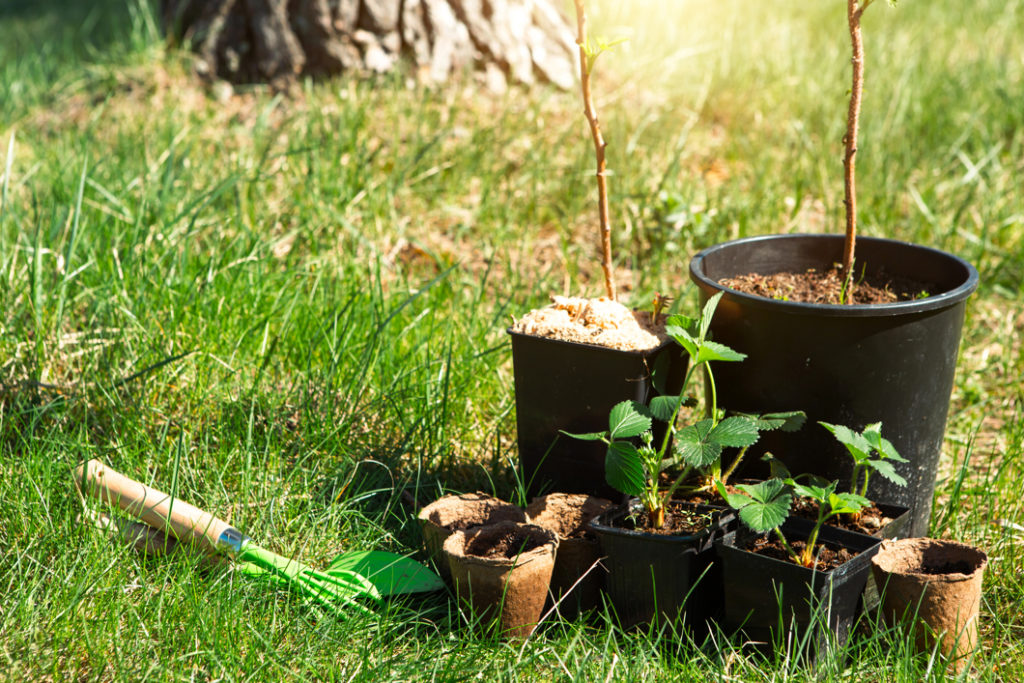
If growing in containers, choose a container for each plant which is at least 38cm wide.
The larger a container you can accommodate, the easier you will find it to maintain.
Light & Exposure
The ideal spot is one with plenty of sun.
Raspberries can tolerate light or dappled shade but will fruit best when grown in full sun.
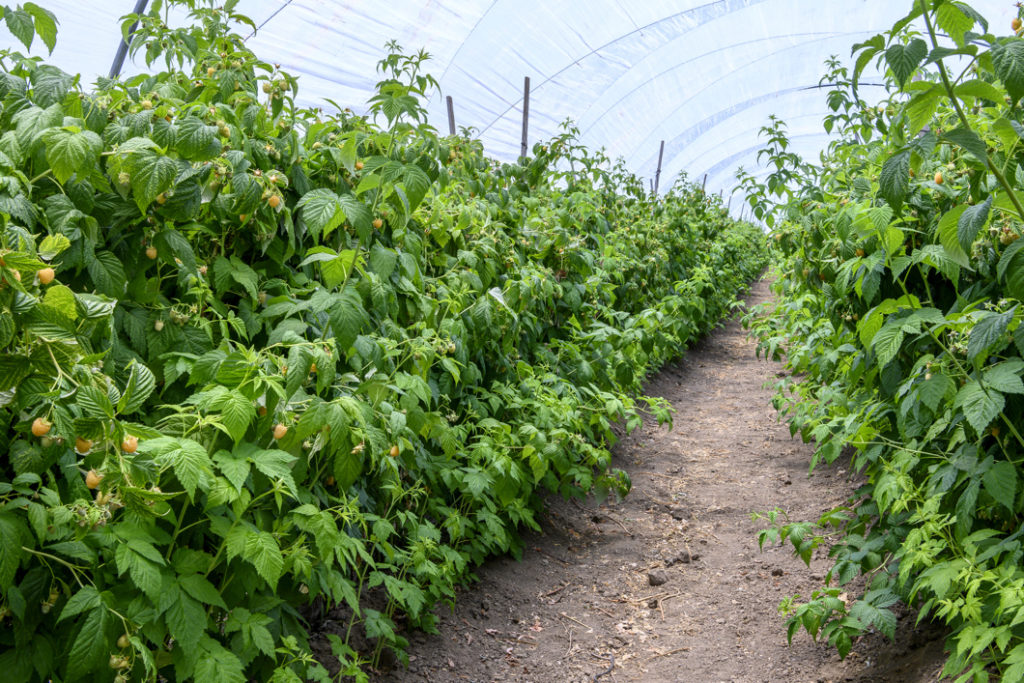
Windy locations can reduce the efficacy of insect pollination, so bear this in mind when planting.
Branches can also bend and whip about, and may break in strong gusts or storms.
Spacing
Raspberry plants should be placed around 45-60cm apart, and if you are planning on creating more than one row, the gap between rows should usually be 1.8m.
Depth
Plant raspberries to the depth that they were previously planted, going by the soil mark on bare root canes.
The top roots should be 5cm below the surface of the soil at a maximum push.
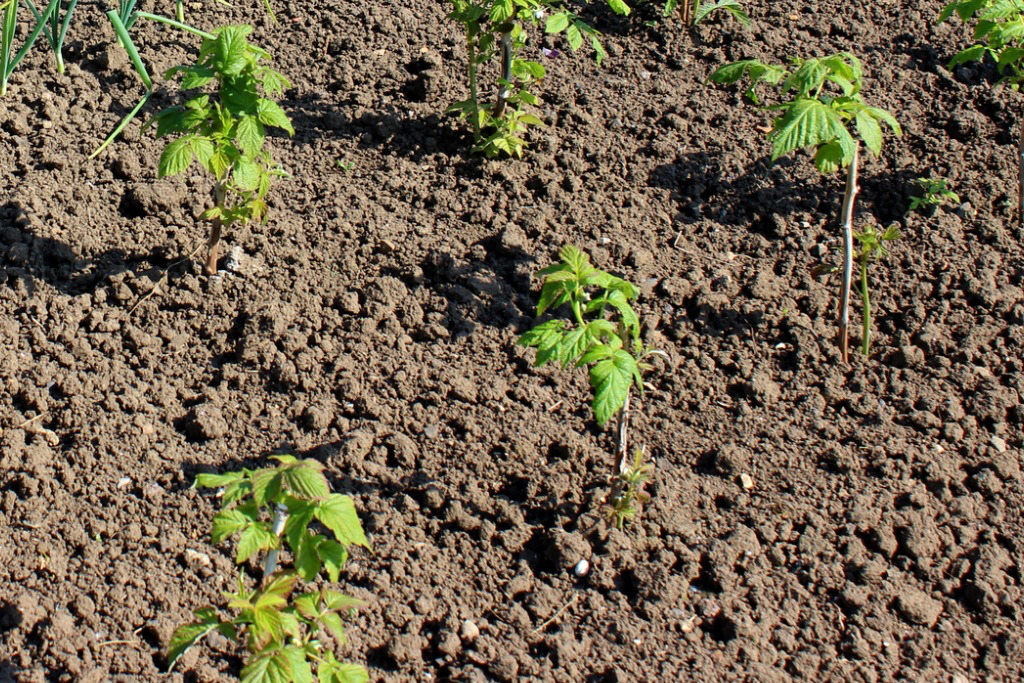
If the soil is heavy clay or prone to waterlogging, it is a good idea to plant raspberries on a ridge raised around 7cm above the surrounding ground level.
Alternatively, you can also plant into raised beds.
Height
The height of supports for your raspberries should be determined ahead of time, and supports should be placed before planting.
Usually, support structures should be around 1.7-2m tall above the ground, though dwarf cultivars can be grown with shorter supporting structures.
Ongoing Plant Care
Caring for raspberries involves, first and foremost, choosing the right options and placing these in the right places to provide optimal growing conditions.

As long as these conditions are met, you should then find it relatively easy to continue to care for your raspberries over time.
Preferred Soil
Raspberries will do best in fertile and moisture-retentive yet well-drained soil with plenty of organic matter.
The soil should be relatively deep, weed-free, and should not become waterlogged.
A slightly acid soil with a pH of between 6.5-6.7 is ideal.
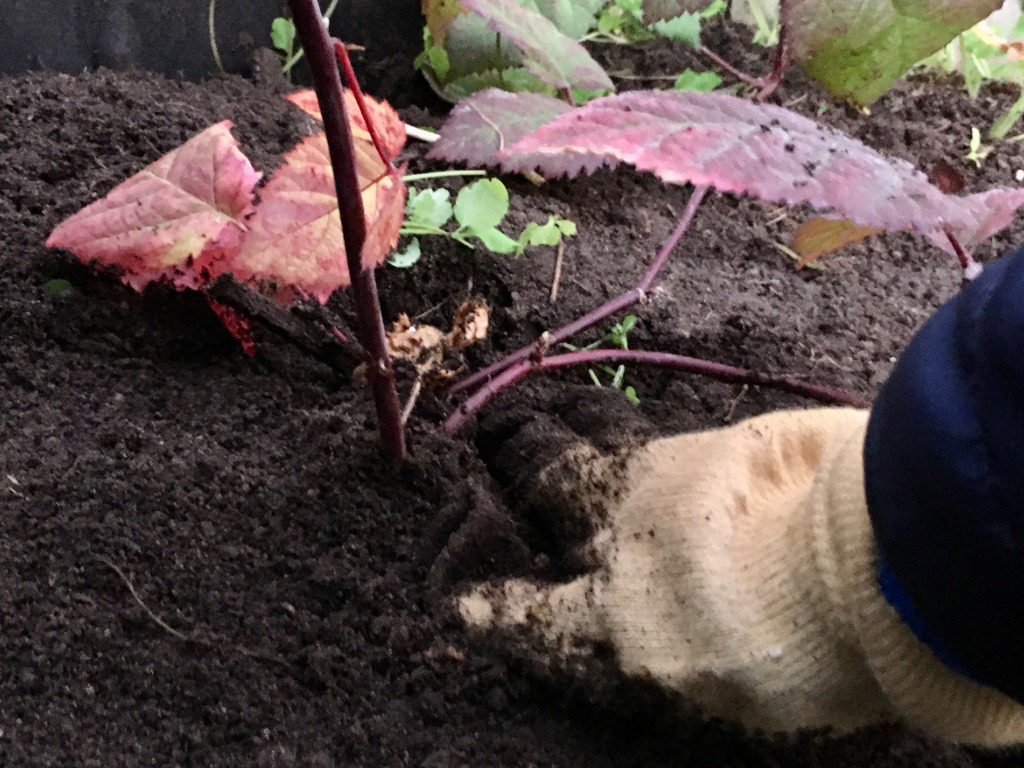
If growing in containers, the optimal mix recommended by the RHS is one with 80% peat-free multi-purpose compost, and 20% loam-based potting mix to increase weight for stability.2Raspberries. (n.d.). Royal Horticultural Society. Retrieved March 23, 2023, from https://www.rhs.org.uk/fruit/raspberries/grow-your-own
However, raspberries should thrive in a homemade mix with sufficient levels of organic matter, which is moist yet free-draining.
Staking Or Trellising
There are a number of different support options for raspberries.
- 1-3 plants (in the ground or in a container) can be supported by a single post, stake, bamboo canes or natural branches in a wigwam shape.
- A single row of summer fruiting raspberries in a small garden can be supported on a single fence, with sturdy posts 3m apart, with galvanised metal wire stretched between these posts 60cm apart.
- A double fence with additional support can be a good choice for autumn fruiting raspberries. Place posts 3m apart as above in two rows either side of your plants. Place the rows around 60cm apart and attach short horizontal beams to each post. Stretch galvanised wire at 60cm intervals working up the posts to form a rectangular pen.
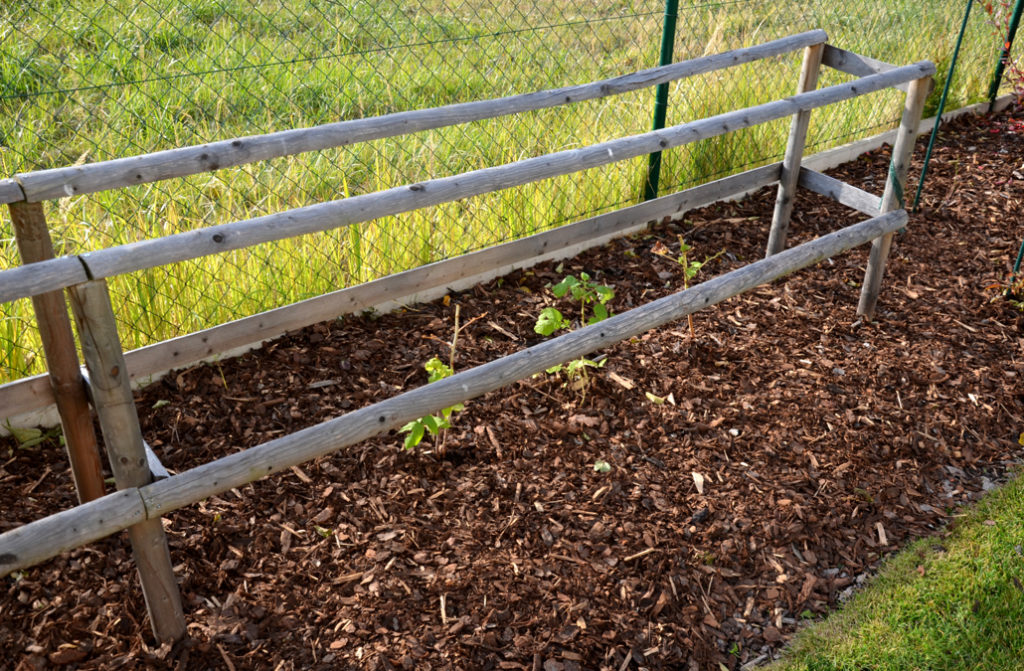
Watering
Raspberries (especially those growing in containers) need to be watered well during dry spells, but you do need to be careful not to overwater or create waterlogged conditions.
If you live in a hard water zone, try to make sure that you water raspberries with rainwater wherever possible.
Ensure that you have a nearby rainwater harvesting system set up.
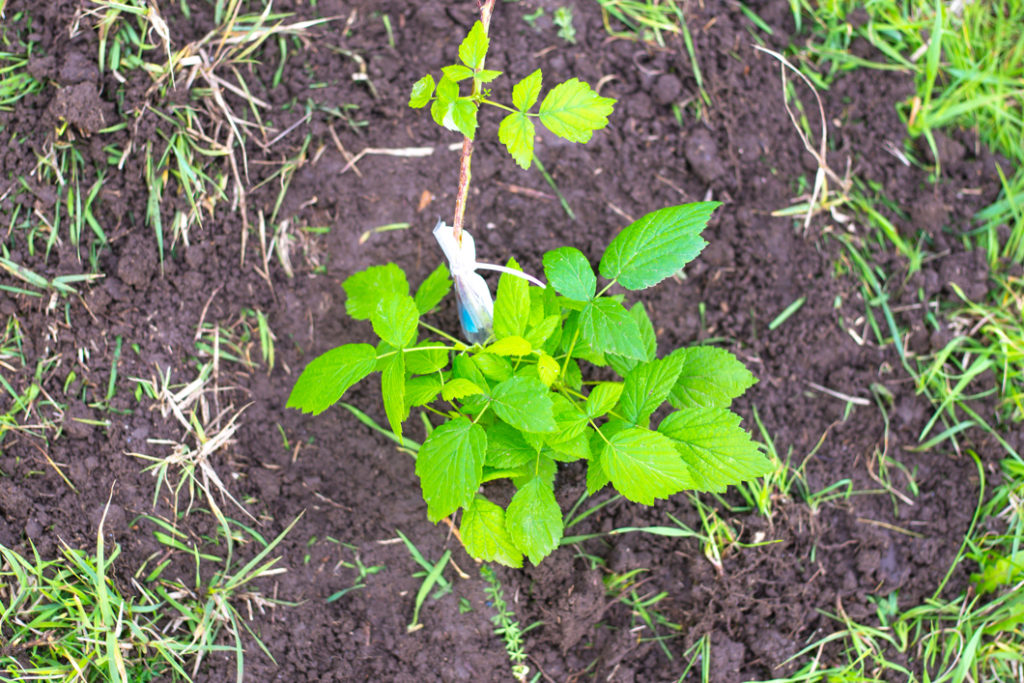
When watering, make sure that you water the soil and not the foliage, flowers or fruits.
Wet foliage can increase the risk of fungal diseases taking hold and watering at or below the soil level where the water is actually needed will conserve water too.
Installing a drip irrigation or soaker hose system can be ideal.
Feeding
Raspberries should be mulched well upon planting, with at least a 7-8cm layer of organic material, which should be replenished each spring.
This mulch will boost nutrients in the soil, improve soil structure, suppress weeds and help retain moisture.

A mulch of good quality homemade compost or well-rotted manure is ideal, and this can be topped with comfrey leaves or the leaves of another potassium-rich dynamic accumulator plant to give a potassium boost.
If you are growing in a container, you should also use an organic liquid feed like compost tea or a comfrey liquid feed once a month or so.
Pollination
Raspberries are insect pollinated, so they will benefit if you create a wildlife-friendly garden filled with bees and other insects.
While it is best not to plant beneath raspberries, growing plenty of flowering plants in the vicinity is highly recommended.
Tansy, rue, yarrow and alliums are some good companion plants to consider.
Container & Indoor Growing
As mentioned above, choose dwarf varieties for container growing.
Try to choose a container which is as large and deep as possible, as larger containers will require less watering and feeding over time.
Growing container raspberries indoors can be challenging, largely because it can be difficult to provide enough light for successful fruiting.
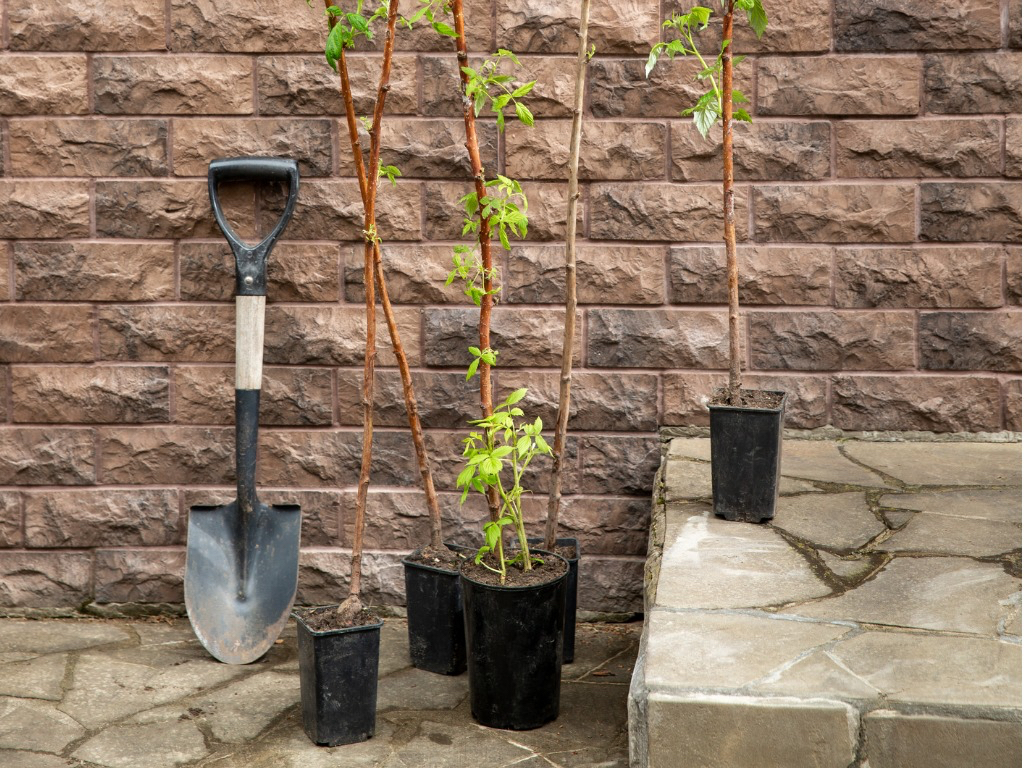
But it is possible, as long as you have a light bright window which allows the plants to get at least 6-8 hours of unobstructed sunlight a day.
Keep your plant in a cool, bright room, away from heat sources and protected from extreme temperature fluctuations.
The other main thing that is different with indoor growing is that without bees and other pollinators around, you will have to pollinate your plants by hand.
As soon as the flowers open, use a small paintbrush to transfer pollen in the blooms to the centres of the flowers.
Common Pests & Diseases
Some common pests of raspberries are:
- Birds, which eat the berries before you get the chance (netting your canes or growing in a fruit cage can help prevent this).
- Raspberry beetle, which causes dry patches to develop on stalk ends and little white maggots are found inside the fruit. Attract plenty of predators to your garden, like birds, hedgehogs and ground beetles to keep their numbers down.
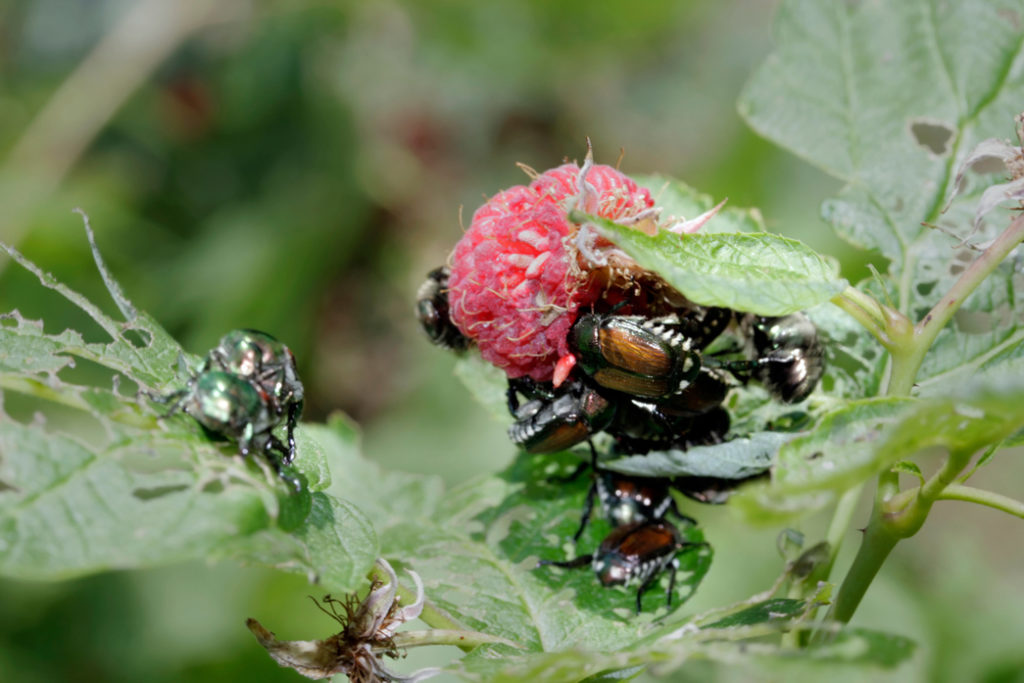
Some raspberry diseases are:
- Raspberry cane blight – a serious fungal disease that causes canes to turn brittle and snap off at the base. Make sure plants are well spaced, well watered and mulched well to reduce incidence and remove all infected material promptly to reduce spread.
- Raspberry spur blight – another fungal disease that will weaken raspberries, though it does not usually kill them. Again, avoid overcrowding and cut out of and dispose of any infected canes.
- Verticillium wilt – make sure environmental needs are met and plants are as healthy as possible. Avoid growing raspberries near other susceptible crops. If it develops, destroy the raspberries present and replace with a plant that is rarely affected.
Pruning
“Even with correct pruning, well established patches of raspberries can become dense thickets and you have to be careful they don’t become a victim of their own success,” shares Master Horticulturist Peter Lickorish.
“Rooted suckers can be lifted in February by gently forking the ground to loosen it and slicing through any connecting growth underground with a spade or secateurs.
“I would suggest lifting any dense clumps of suckers, separating them and transplanting them elsewhere to give their parent plants space for good air-flow. This helps in the fight against fungus.
“Raspberry suckers growing outside of their allotted space can be transplanted elsewhere too.”
Harvesting
Raspberries are ready to harvest once the berries have reached their mature colouration and are plump, glossy and full.
Mostly, mature raspberries will be bright red, though some varieties are yellow and there are also black cultivars.
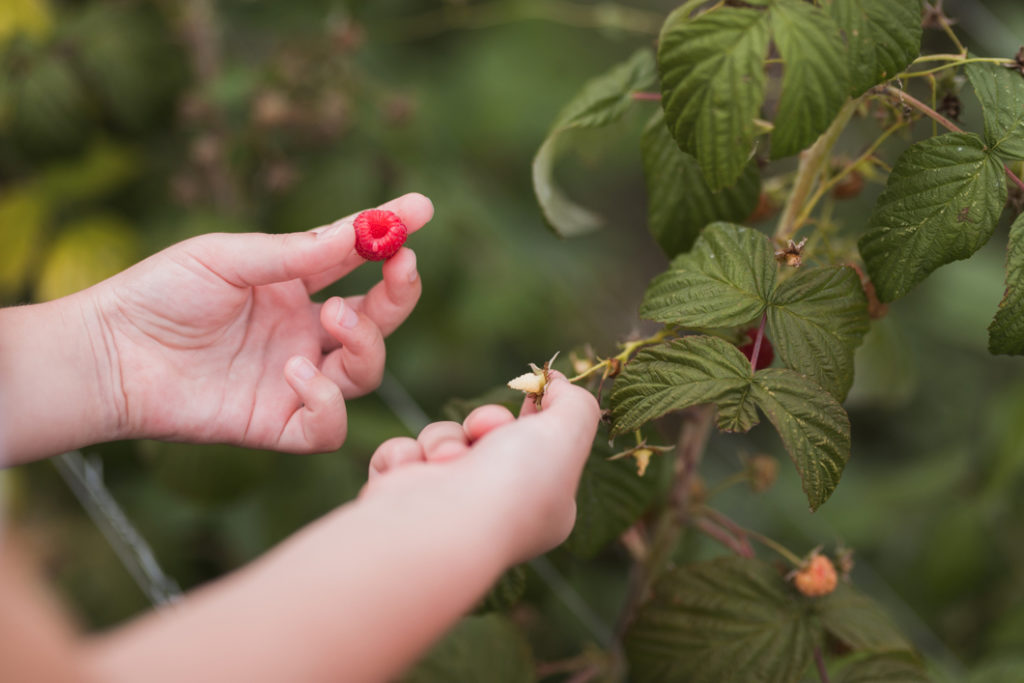
When the fruits will be ready to harvest depends on whether you are growing an early-summer, mid-summer, late-summer or autumn fruiting variety.
How To Harvest
Simply pull the ripe berries off the central white rasps.
It is best to do so on a dry and sunny day if possible.
Average Yield
It is normal to obtain yields of around 9kg from a 3m row.
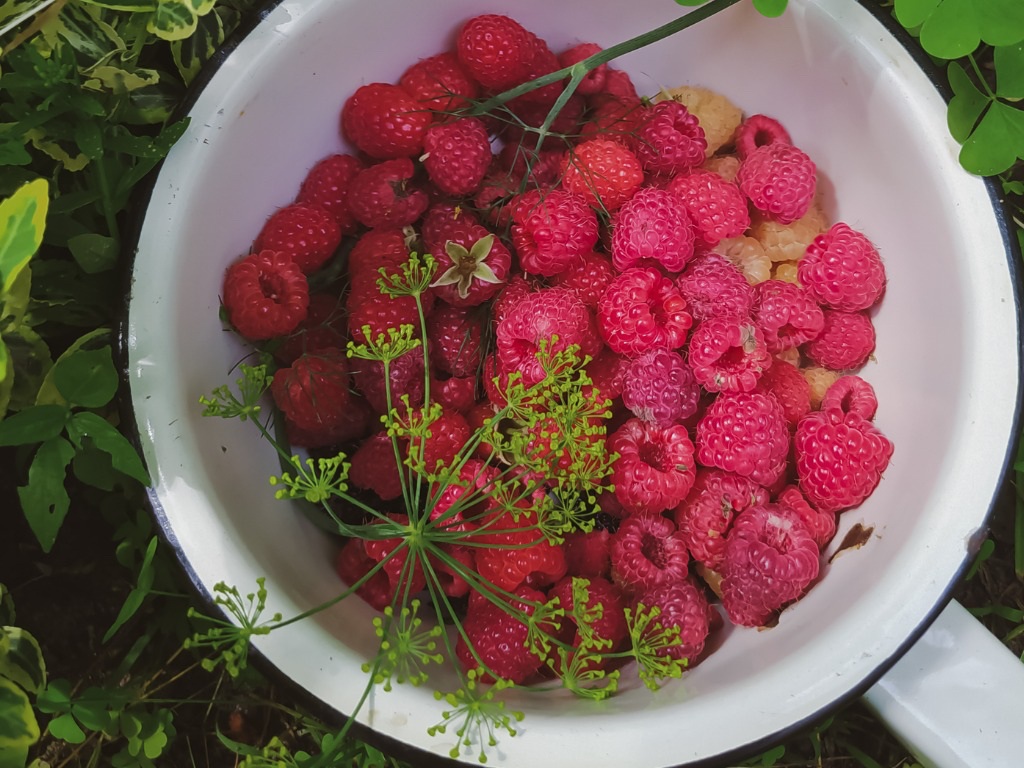
Though some of the best cultivars can deliver a yield almost as high, or even higher, from a single plant.
Storing Raspberry Fruits
Raspberries are delicious when eaten fresh.
They can be stored in your fridge for a few days, or frozen for later use.
If storing, wash before eating rather than prior to storing, to reduce the likelihood of fruit becoming mouldy.
Of course, you can also preserve them in a range of other ways, such as by making raspberry jam, for example.
You should have no difficulty in finding ways to use up all your delicious berries.
References
- 1Rubus idaeus var. idaeus. (n.d.). North Carolina Extension Gardener Plant Toolbox. Retrieved March 23, 2023, from https://plants.ces.ncsu.edu/plants/rubus-idaeus-var-idaeus/
- 2Raspberries. (n.d.). Royal Horticultural Society. Retrieved March 23, 2023, from https://www.rhs.org.uk/fruit/raspberries/grow-your-own
